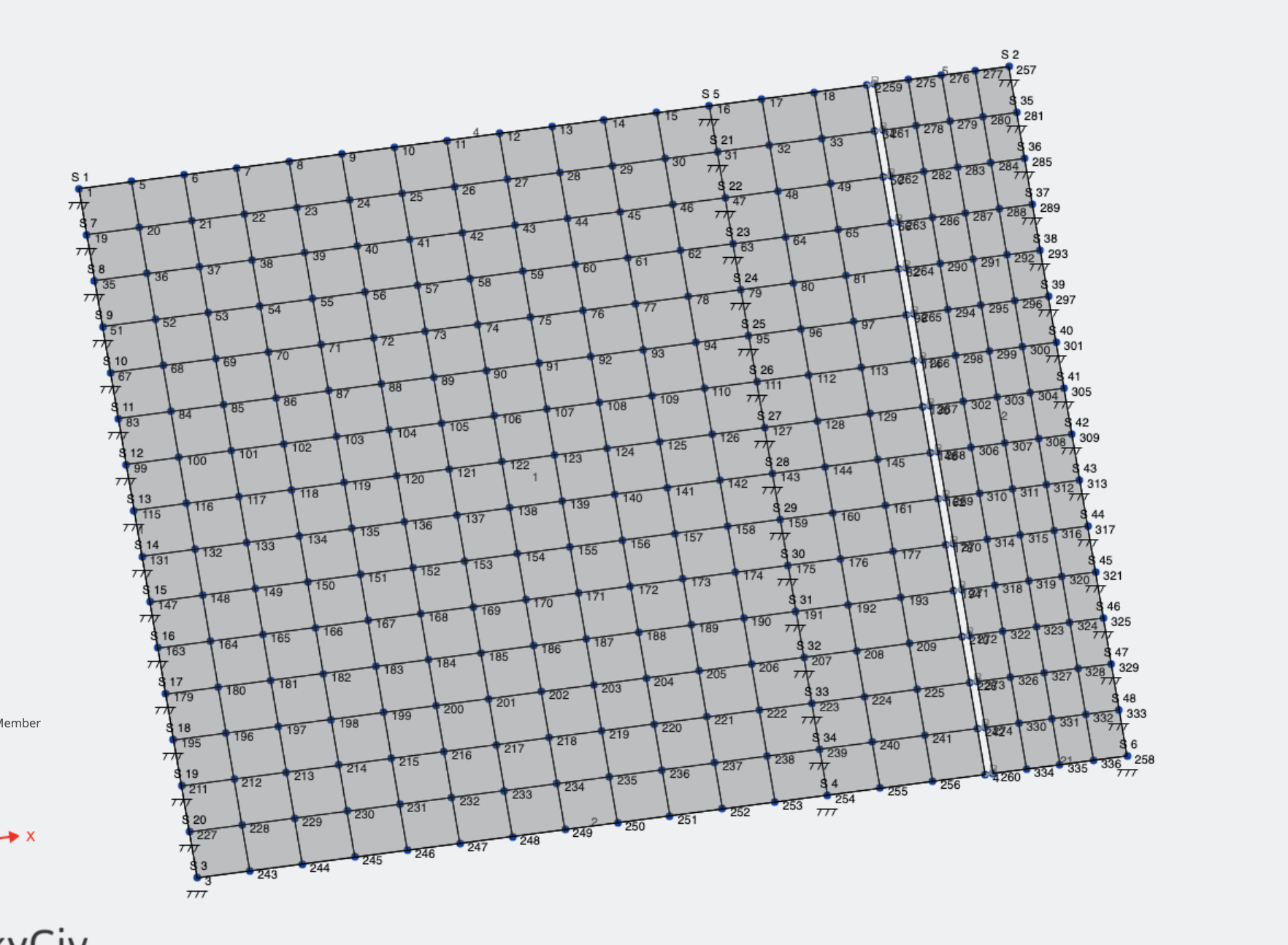Rigid Member の概要と使用例
剛体メンバーは強力で効果的なメンバー クラスです, 完全に剛性の高い部材をシミュレートするために使用できます。. ある場所から別の場所に力を伝達するためによく使用されます。, 何らかの任意の手段を介して, 想像上の, 無限に硬い部材. 仕組みの詳細については、以下のビデオをご覧ください。, ソフトウェアでモデル化する方法, そしていくつかのユースケース:
剛体メンバーの使用方法
メンバーを剛体として設定するには, メンバーを指定するだけです “タイプ” なので “リジッドリンク”. 注意: を切り替える必要があるかもしれません アドバンストモード 見に行きます タイプ 属性:
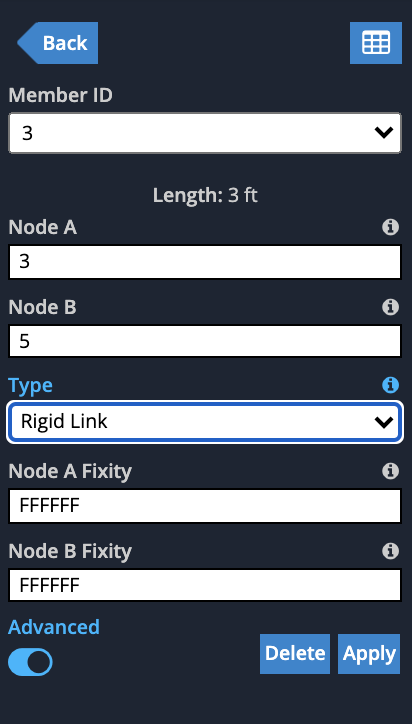
オプションが折りたたまれていることに気づくでしょう (リジッドリンクには必要ないため、) ただし、エンドフィックスを制御することはできます, これは基本的にどの荷重が転送されるかを制御します. 一度クリックすると 適用する, you will see that the rigid link is drawn in light grey color with a “R” その横にある記号:
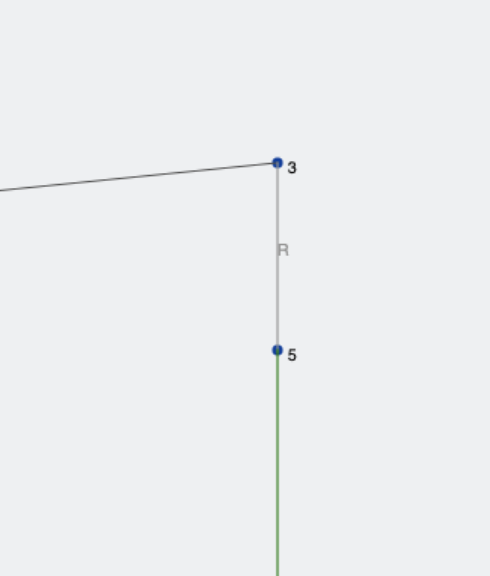
使用例
積み上げ梁

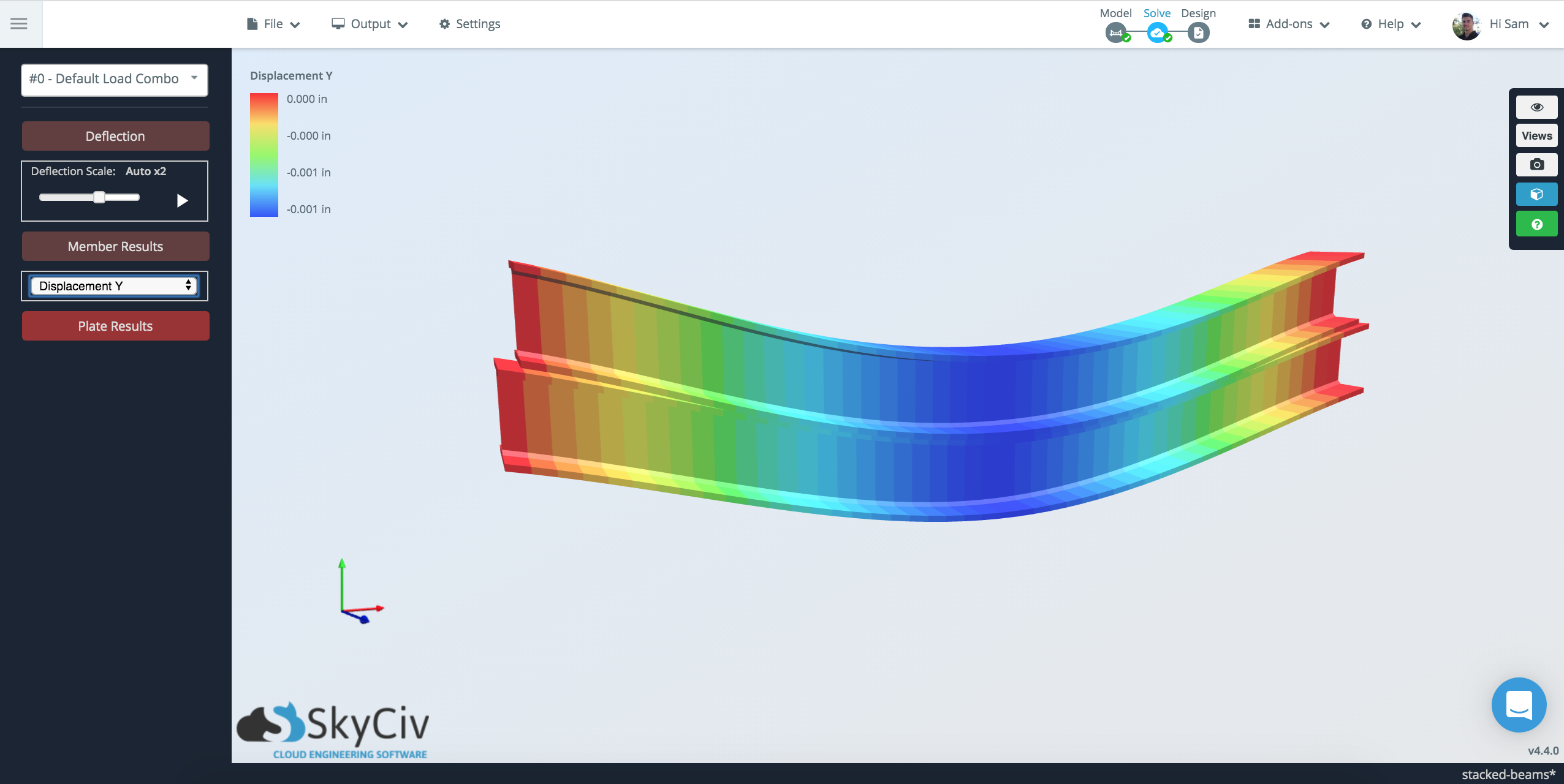
プレート間のラインヒンジ
剛体リンクは、構造または要素間の剛体接続を定義するのに役立ちます. 彼らはしばしばメンバーを結合する想像上の堅いリンクとして考えられます。 一緒に平行移動および/または回転. 剛体リンクを使用して、メンバーのオフセットまたは接続を手動で制御することもできます。. さらに、リジッド リンクの固定/解放を変更して、接続先に対してどのような力と影響を与えるかを制御できます。. この良い例は、ヒンジでプレートを接続するライン ヒンジをシミュレートすることです。:
プレートを 2 枚追加することから始めます (ヒンジで結合したい場合) そして、それらを端部固定FFFFRRを備えた剛体メンバーに接続します. これらの堅固なリンクは、下に見られるプレートの隙間を接続しています。:
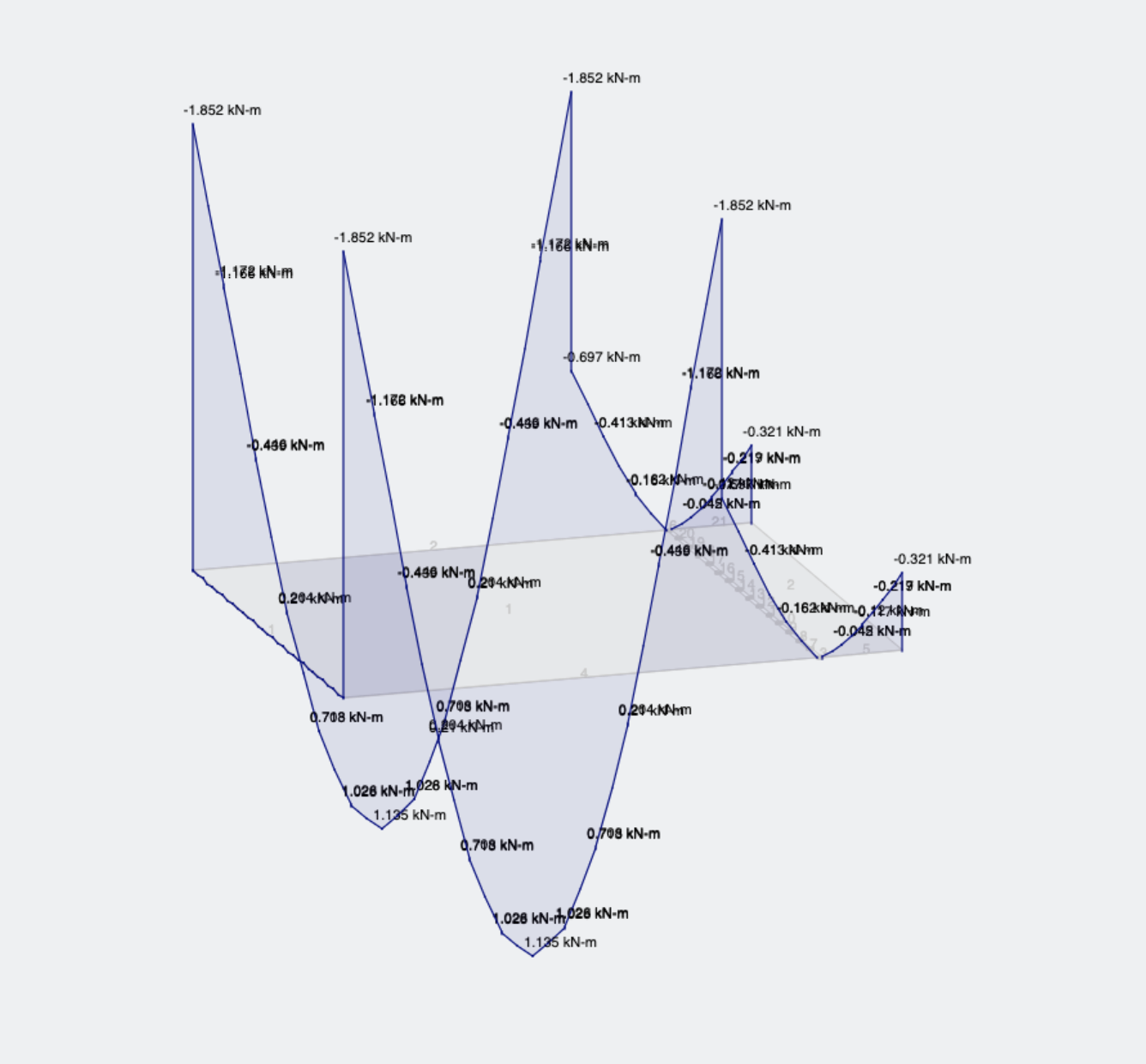
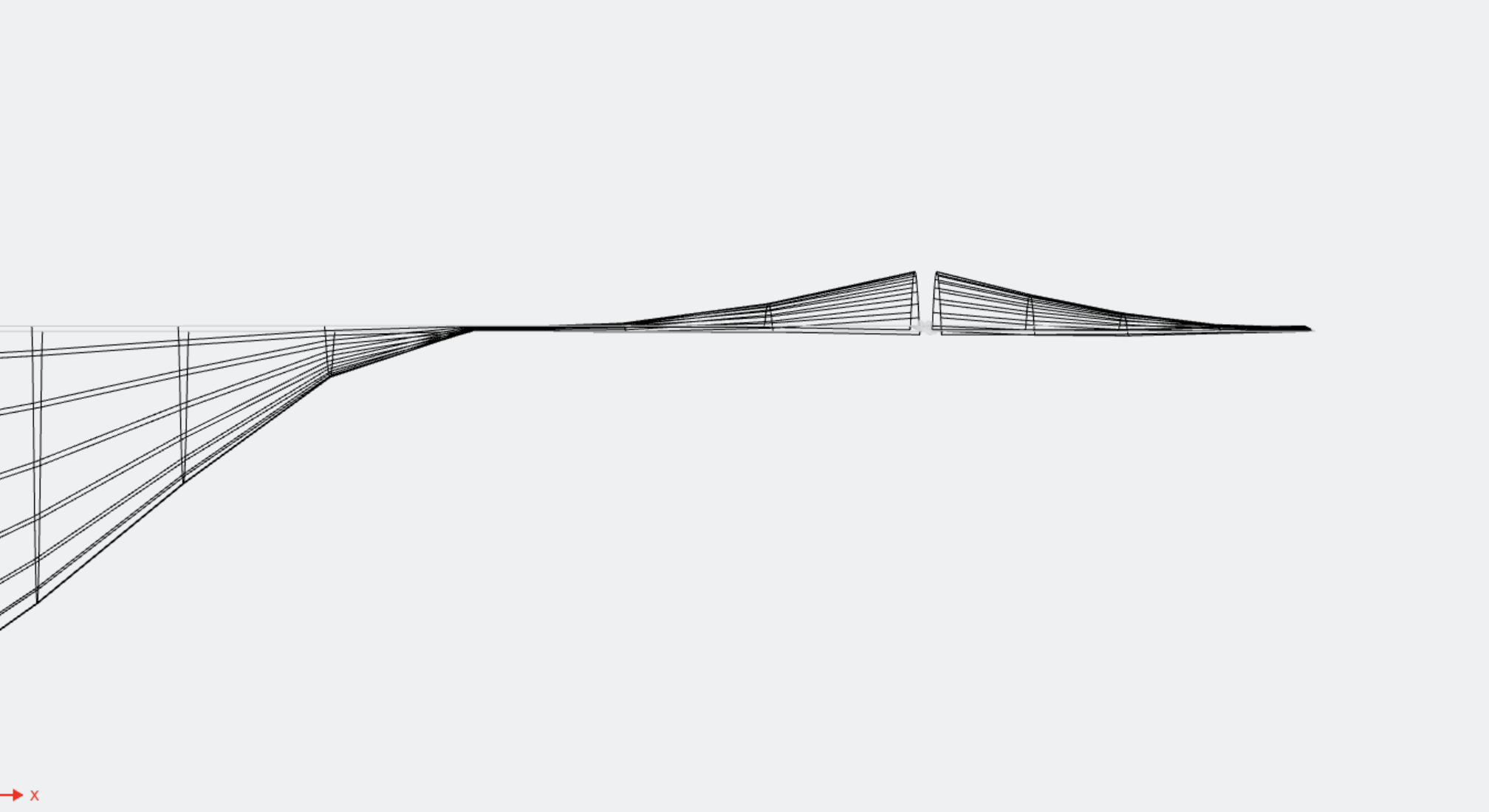
一般的な問題のトラブルシューティング
マスター/スレーブ接続
リジッド リンクを使用するときにソルバーから発生する最も一般的なエラーの 1 つは次のとおりです。:
“エラーコード 182: ノード #5 マスターノードです (ノードA) メンバーの #17 rigid link and cannot be used as the slave node (Node B) 別のリジッド リンク メンバーの. This might be due to an offset that is connected to a rigid link. Please remove the offset or rigid link to avoid this issue.”
If you’re receiving an error like this this guide will help you to fix these sorts of issues. The issue occurs because a Master node can have many slave nodes. しかしながら, a slave node can only have one master node. 簡単に言えば, keep a single Master with many slaves coming from it. Consider the below example, which was causing the above error:
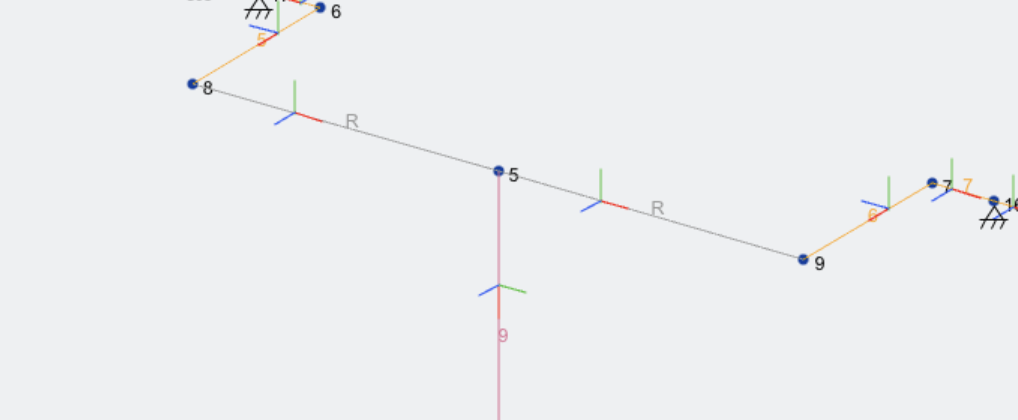
The best thing you can do is turn on the local axis and it will show the direction of master to slave by the red line (the member’s local x-axis). You can see that the red line is flowing left to right which would indicate that the Slave of one member is also a Master of another.
これを修正するには, flip the node IDs of the first member so you get this behaviour, with the rigid members sort of flowing out from a single node:
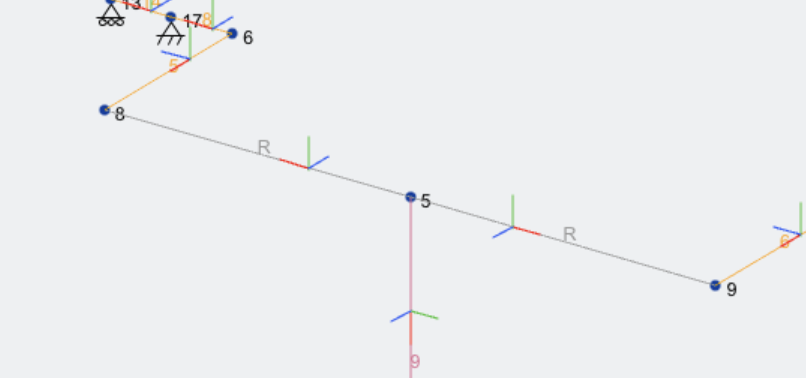
Using Rigid Links near Offsets
This is quite similar to the above issue, ただし、オフセットを使用すると自動的に発生する可能性があります。. オフセットあり, マスター ノードは常にメンバーのオフセット元のノードです。. 校長は上記と同じです, これが機能することを確認するために, オフセットノードから始まる剛体メンバーが常に存在します。. もう一度, the member local axis should 流れ出します:
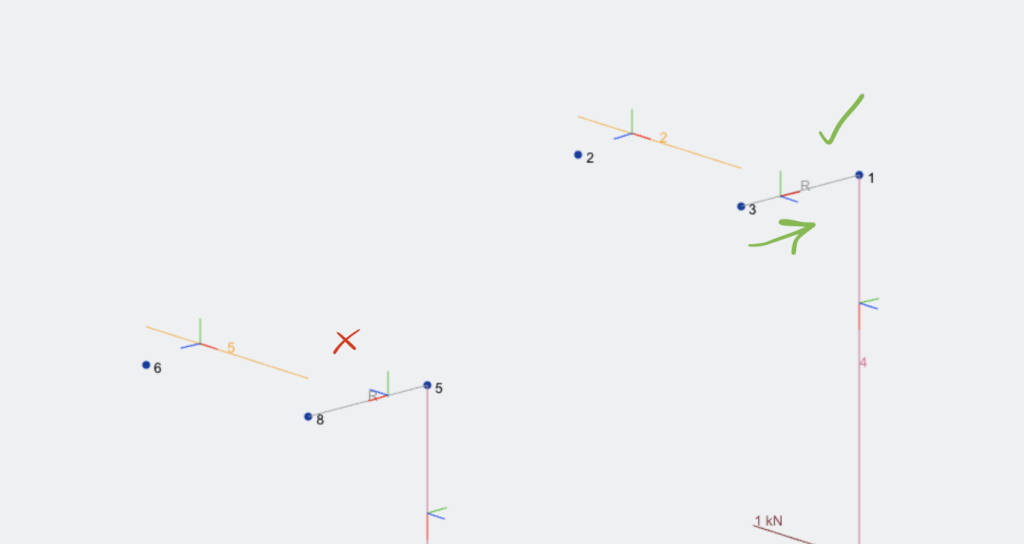
隣接するダイヤフラム
Having two connected diaphragms can also cause Master-Slave issues. It’s important to note that the Master node in a diaphragms is always the first node. This can create issues where two connected diaphragms have a common master/slave node. So if you want two adjacent rigid diaphragms, you would need to set it up like so:
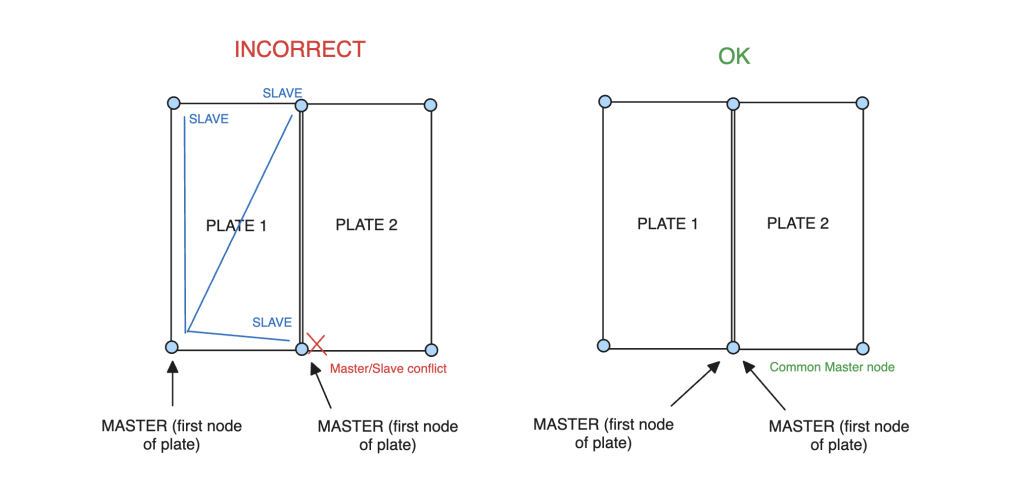
The problem can be worsened if there are more than two diaphragms, since there is no way to share a common master node. この場合, it is better to replace the whole plate with a single rigid diaphragm, remember you can have more than 4 nodes for a plate, so this should be a pretty acceptable workaround in most cases:
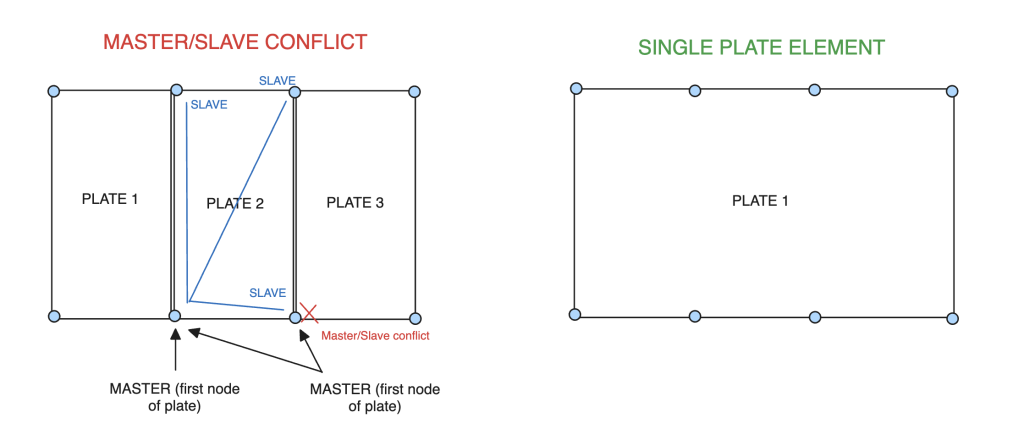
Slaves Cannot be Supports
This is a general structural analysis limitation.

